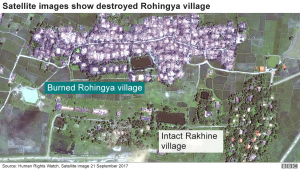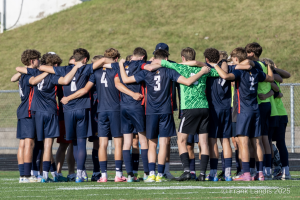The Rohingya Refugee Crisis

October 22, 2020
The Rohingya Refugee Crisis
Roxy Neset
Staff Reporter
The Rohingya people of Myanmar are in one of the most precarious refugee situations in the world. Around one million Rohingya have fled since the brutal military crackdown in their native Rakhine state.
In 2017, the government of Myanmar began restricting the rights of the Rohingya by depriving them of citizenship. Myanmar has an overwhelming Buddhist majority, about 90% of the population according to the Harvard School of Divinity. The Rohingya are one of the rare populations of Muslims living in Myanmar. As the Rohingya began to clash with the government over their rights, the military was sent to the Rohingya’s native Rakhine state. After a fight broke out between the two groups, the military, controlled by the Buddhist government, started one of the most controversial events of ethnic cleansing ever.
 The military burned Rohingya villages and left the nearby Buddhist townships unscathed. Rohingya women and girls were captured, raped and abused by soldiers, and the men were tortured and mutilated. At least 6,700 Rohingya were killed in the month after the violence broke out, 730 of them being children under the age of 5. None had homes to return to, and their Buddhist neighbors would not offer them asylum.
The military burned Rohingya villages and left the nearby Buddhist townships unscathed. Rohingya women and girls were captured, raped and abused by soldiers, and the men were tortured and mutilated. At least 6,700 Rohingya were killed in the month after the violence broke out, 730 of them being children under the age of 5. None had homes to return to, and their Buddhist neighbors would not offer them asylum.
The Rohingya were homeless, stateless people living in constant fear of the harsh military. Their only option was to flee to nearby Bangladesh, already one of the most densely populated countries in the world. In Bangladesh, the battered Rohingya were met by their relatives and friends who had fled in earlier years.
Unfortunately, the Rohingya were not safe in these camps. They made easy targets for child labor, human trafficking and even more forms of exploitation. Life for the Rohingya people was only marginally better in these unsanitary camps filled with famine and disease. The biggest of these camps is Kutupalong, which is currently the most densely populated refugee camp in the world. Kutupalong is currently estimated to hold 860,000 Rohingya people in an area of just five square miles.
The United Nations High Commissioner for Refugees reports that among the refugees are around 500,000 children, half of which have no access to formal education. Education is heavily restricted at the camps, and those fortunate enough to have access struggle with a lack of proper teachers and supplies. Adults in the refugee camps are not allowed to work or leave, putting many into a financial struggle with no hope of escape.
Malnutrition runs rampant in the refugee camps and growth stunting is common along with chronic malnourishment. Various organizations like the United Nations High Commissioner for Refugees and Red Cross try to airlift supplies, but it remains a complicated process that takes time the Rohingya people do not have.
The struggles in the refugee camps have not gone unnoticed. Engineers from Britain and China began working on a small island in the Bangladeshi river delta in 2019, trying to prepare the recently surfaced island for an influx of Rohingya refugees. The island has been equipped as best as possible, but many people are concerned that it will flood during the monsoon season, a common occurrence in the islands in the Bay of Bengal. Bhasan Char Refugee Camp in the Bangladeshi River Delta
Bhasan Char Refugee Camp in the Bangladeshi River Delta
The Rohingya have already suffered unspeakable horrors, but their struggle is long from over. Their only hope is selection for asylum in another country, with their only other options being the cramped, unsanitary, dangerous refugee camps or repatriation to Myanmar, where the situation for their people has yet to be improved.





























































